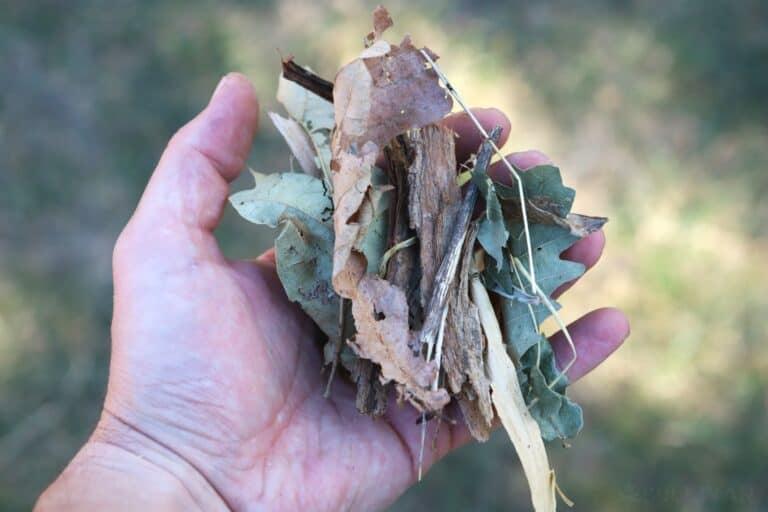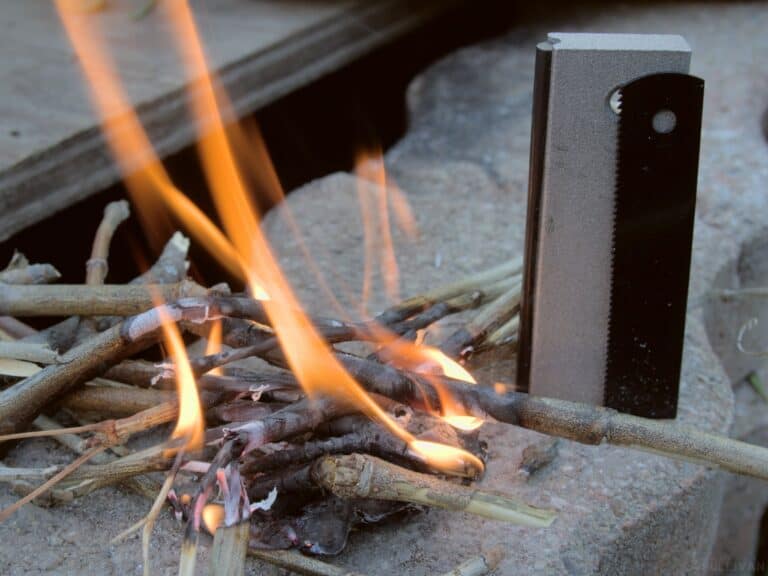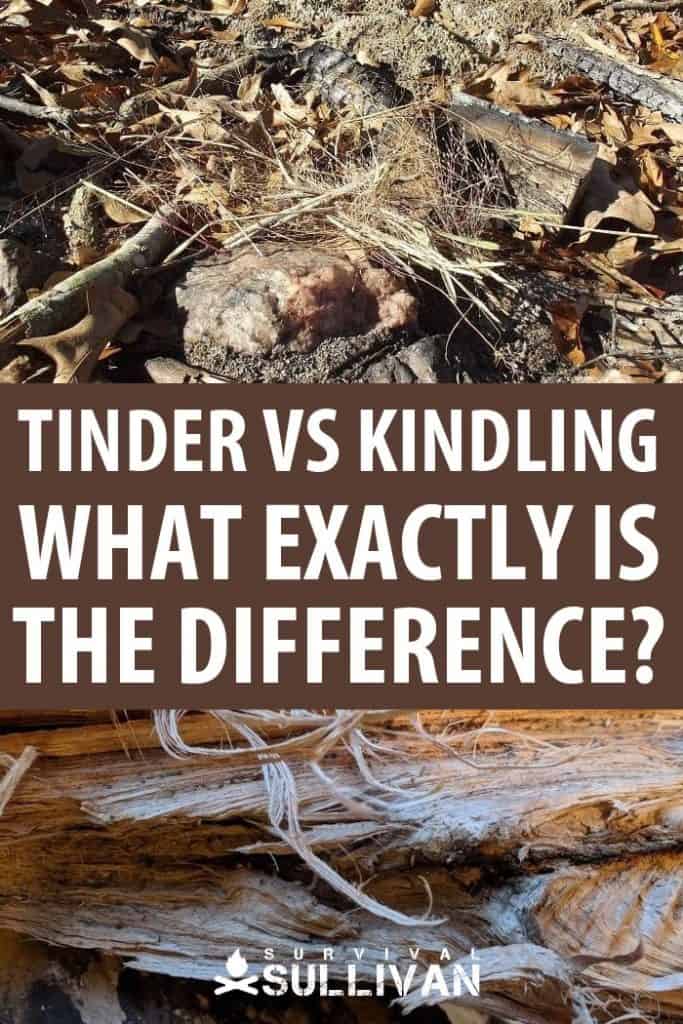Tinder and kindling are not the same thing, but you do need both to start a roaring fire – and sustain it. Being able to understand exactly what each element of fire-making is and does, you will be better equipped to get a campfire going no matter what weather elements you are battling.
Tinder is the smallest material that is used when starting a fire that burns really quickly. Kindling is larger than tinder, it burns more slowly, and creates a sustainable flame that can be used to build a larger fire.
All types of tinder are small in size, are comprised of loose material, and burn rapidly. On the other hand, the best kindling is larger and more dense than tinder but smaller than a typical piece of firewood.
Even if you have in your possession a hardy lighter and water-resistant matches, you will still need tinder and kindling to get a steady fire going. Using friction to start a fire is a lot more difficult than it may appear in any survival reality series.
Best Natural Types of Tinder
- Dry Pine Needles
- Dry Grass
- Dried Tree Sap
- Bird Nests
- Pine Cones
- Cattails
- Dandelion Heads
- … and more.
Tinder Basics
The quick-burning nature of tinder is why it is perfect for getting the spark needed to cultivate the flame needed to establish a fire. The best type of tinder is no wider than your pinky finger. Larger tinder is often too thick to start burning quickly.

The key to getting tinder to light is blowing just gently onto the embers created after it is lit so they spread out and continue to catch and ultimately burn. The act of blowing distributes oxygen evenly onto the burning embers, encouraging their growth.
In a survival situation, you may have to rely solely on natural tinder that can be scavenged quickly to get a flame going to start a fire.
Carrying tinder with you in your bugout bag is highly recommended because doing so will also keep dry tinder at your fingertips.
But, if your bag is lost or you are out in the wild longer than anticipated, that might not always be an option.
Best Natural Kindling Options
- Small Dry Sticks
- Dry Pine Branches
- Dry Fire Branches
Kindling Basics
Small branches are most often used for tinder when they are available:

The way the kindling is placed around the burning embers can cause a fire to soar or smoke itself out in a matter of moments.
There are a few different ways to place kindling around glowing tinder embers to prevent snuffing it out, and to get a good fire base going.
The tipi style formation has long been a favorite of our pioneering ancestors and of the Boy Scouts.
The log cabin style of building a fire with kindling requires more starting material, but has a tendency to burn more sustainably.
The lean-to method of placing kindling is yet another way to create a robust campfire in a survival situation or for cooking.
No matter what type of fire building formation you choose to place the kindling in to start a fire, the tinder must be placed in the center of the fire ring area and the kindling stacked above it.
Once you use the heat source to catch the tinder on fire, the heat created by the smoldering tinder will rise up towards the kindling and ignited it.
The heat generated by the burning kindling will in turn catch the pieces of firewood added to increase and sustain the growing flames, on fire as well.
Fire Starting Basics
To get absolutely anything to burn you must have three distinct things: flammable material, air/oxygen, and a heat source. Air is, of course, the constantly available fire-starting ingredient that you will not struggle to capture even in a dire survival situation.
Keeping a heat source (or more than one, ideally) in your everyday carry (EDC) kit could definitely be a game changer in a life-or-death situation.
The most commonly used heat sources are lighters, matches, handheld propane torches, and supplies to use the more difficult friction method.
That brings us to flammable material and exactly where both tinder and kindling come into play. Making space in your bugout bag for each of these essential elements could play a significant role in determining if you will be a survivor or become a statistic.
Tinder and kindling should be packed not only in your bugout bag, but inside of a plastic baggie or other sealable container to prevent them from either getting wet or absorbing too much moisture from the air and becoming damp.
Both wet and damp tinder and kindling are incredibly hard to light and sustain the sparking ember or flame long enough to get a fire going.
Conversely, if your tinder or kindling are stored improperly or for too long and become too dry, they may light up quickly but burn out with just as much speed.
When you are forced to source tinder and kindling from nature these same problems of dampness and dryness can also hamper your fire-building efforts.


Tara Dodrill is a homesteading and survival journalist and author. She lives on a small ranch with her family in Appalachia. She has been both a host and frequent guest on preparedness radio shows. In addition to the publication of her first book, ‘Power Grid Down: How to Prepare, Survive, and Thrive after the Lights go Out’, Dodrill also travels to offer prepping tips and hands-on training and survival camps and expos.
